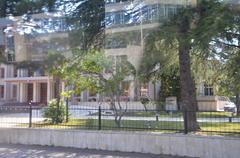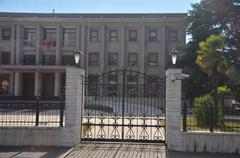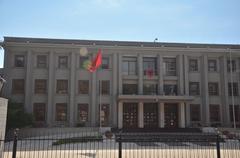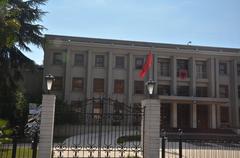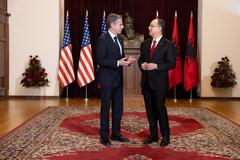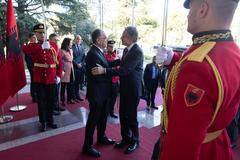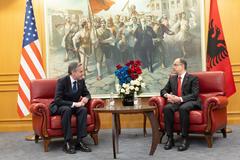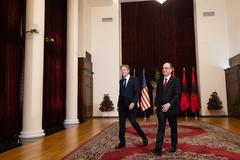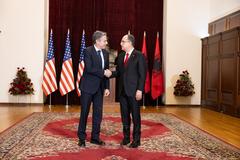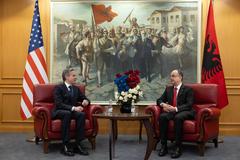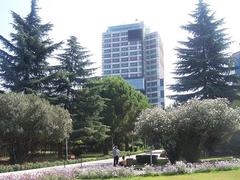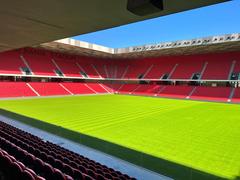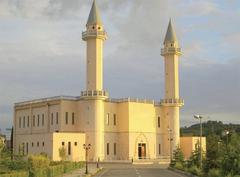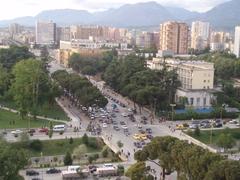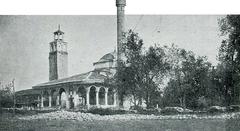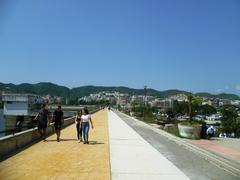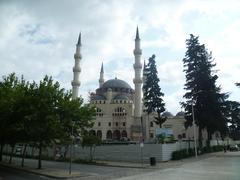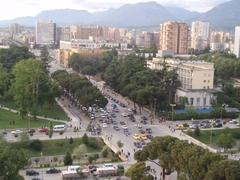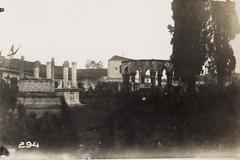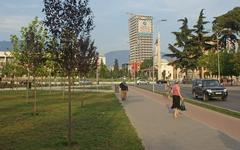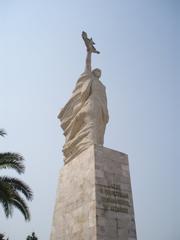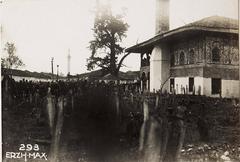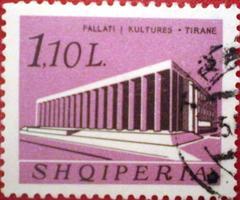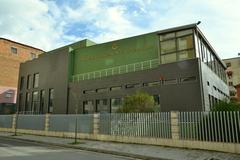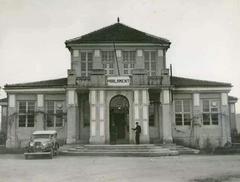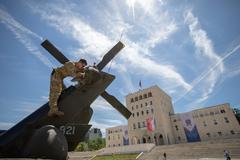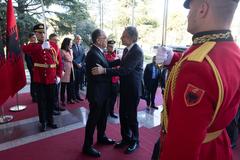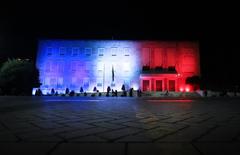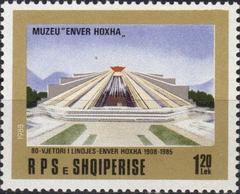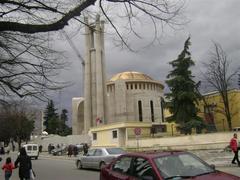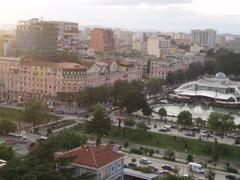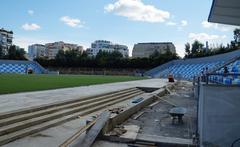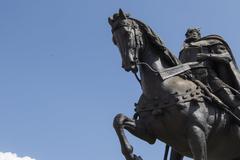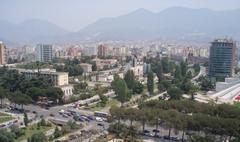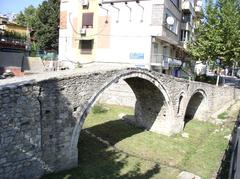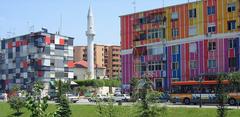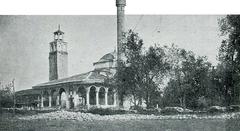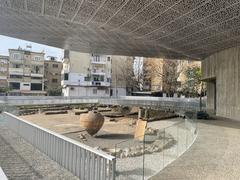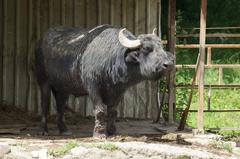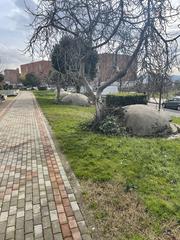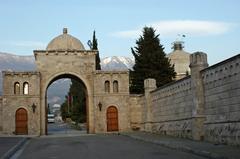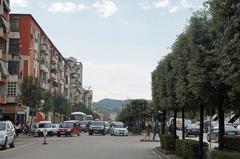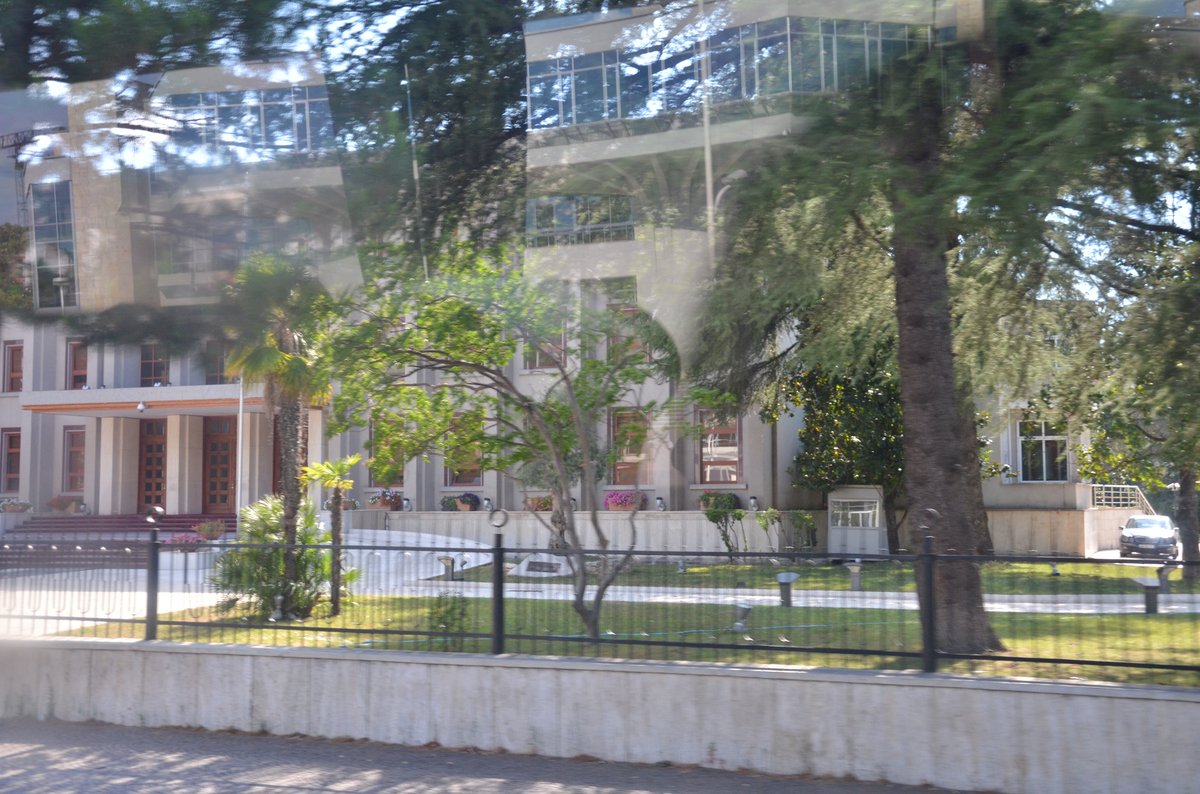
Presidential Palace Tirana: Visiting Hours, Tickets, and Historical Significance
Date: 14/06/2025
Introduction
The Presidential Palace of Tirana—also known as the Palace of Brigades (Pallati i Brigadave)—stands as a monumental testament to Albania’s political and cultural evolution. Originally commissioned in the 1930s by King Zog I as a royal residence, this palace reflects the nation’s journey from monarchy through occupation, communism, and finally to its current republican era. Its striking Italian Rationalist and neoclassical architectural style, together with its expansive, Renaissance-inspired gardens, make it a unique landmark within Tirana. Although primarily serving as the official residence and workplace of the President of Albania, the palace occasionally opens its gates for public tours and cultural events, offering visitors rare glimpses into its storied past.
This comprehensive guide provides everything you need to know about visiting the Presidential Palace, including historical context, architectural highlights, ticketing and visiting hours, accessibility, nearby attractions, and practical travel tips. For the most current information, always consult official sources such as the Albanian Presidency and the Ministry of Culture (everything.explained.today; Travelling King).
Table of Contents
- Origins and Royal Ambitions
- Architectural Design and Construction
- Wartime and Occupation Era
- Communist Transformation
- Republican Era and Modern Use
- Legal Disputes and Symbolic Significance
- Gardens and Surroundings
- Visiting Hours, Tickets, and Tips
- Nearby Attractions and Activities
- Special Events and Guided Tours
- Photographic Spots and Virtual Tours
- Frequently Asked Questions (FAQ)
- Preservation Efforts and Public Access
- Conclusion and Legacy
- Resources and Further Reading
Origins and Royal Ambitions
The Presidential Palace’s origins lie in Albania’s early 20th-century history. Conceived by King Zog I, the palace was meant to symbolize the ambitions of Albania’s newly independent monarchy. Funding for its construction came from the “SVEA Loan,” negotiated with Italian financial interests, and its location on the hills of Sauk was chosen for visibility and prestige (everything.explained.today). The palace was to be Albania’s answer to the royal palaces of Europe, intended as both a national symbol and a statement of modernity.
Architectural Design and Construction
The palace’s design is rooted in Italian Rationalism, characterized by symmetry, monumental scale, and clean lines. Italian architects, including Giulio Berte and later Gherardo Bosio, shaped the palace’s distinctive style, which blends neoclassical grandeur with modernist restraint. The outbreak of World War II interrupted construction, and King Zog I never occupied the palace. Completion was overseen by Bosio during the Italian occupation, resulting in a building that is unique among fascist-era architecture and notable for its preserved pre-communist bas-reliefs (everything.explained.today).
Wartime and Occupation Era
The palace’s intended royal function was realized only briefly during King Vittorio Emanuele III of Italy’s 1941 visit. For most of World War II, it served as the residence of Italian viceroys and later as a focal point during Albania’s assertion of sovereignty following Italy’s capitulation. The palace housed the Albanian parliament’s declaration of independence from the Italian Crown and witnessed episodes of resistance, including the safeguarding and eventual repatriation of the royal flag (everything.explained.today).
Communist Transformation
With the communist takeover in 1945, the palace was renamed the “Palace of the Brigades,” reflecting its new ceremonial function. It hosted government receptions and official events rather than serving as a residence. The Cultural Revolution of the 1970s led to the covering—but not destruction—of its ornate bas-reliefs, and the palace remained a symbol of state power through decades of communist rule (everything.explained.today).
Republican Era and Modern Use
The fall of communism saw the palace’s transition to the “Presidential Palace,” with its role shifting to host state receptions, official ceremonies, and the President’s residence. In 2013, President Bujar Nishani became the first head of state since King Zog I to reside within its grounds. The palace continues to be the venue for annual events such as the Presidential Ball and other high-profile gatherings (everything.explained.today).
Legal Disputes and Symbolic Significance
Ownership of the palace has been contested, most notably by Leka Zogu, Crown Prince and heir to King Zog I. Although a Supreme Court decision in 2013 was claimed as a victory by the royal family, the palace remains under state control. Its symbolic importance was underscored by events such as Leka II’s wedding reception held at the palace in 2016 (everything.explained.today).
Gardens and Surroundings
The palace’s gardens, spanning over 70 hectares, are among Tirana’s largest green spaces. Inspired by Italian Renaissance and French formal gardens, they feature tree-lined avenues, formal lawns, fountains, statues, and rare native flora such as ancient oaks and Mediterranean pines. The gardens provide a tranquil retreat, contrasting with the urban bustle and offering ideal settings for photography and leisurely walks (everything.explained.today).
Visiting Hours, Tickets, and Tips
Visiting Hours:
The Presidential Palace is primarily a government residence and not open for daily public tours. Public access is generally offered only during national holidays, cultural events, or through special guided tours arranged by the Ministry of Culture or official tourism offices (official website).
Tickets:
Entry to the gardens is typically free during public openings. Guided tours (when available) may require tickets or advance registration, with discounted rates often offered for students and seniors.
Accessibility:
The gardens and primary walkways are wheelchair accessible, though some historic building areas may have limited access. Contact the palace administration to arrange accommodations if needed.
Travel Tips:
- Visit during spring or autumn for the best weather and fewer crowds.
- Always check the latest updates on hours and event schedules via official channels.
- Dress smart-casual and behave respectfully; the palace is an active state residence.
- Photography is allowed in outdoor spaces, but restricted inside unless otherwise specified.
Nearby Attractions and Activities
- Grand Park of Tirana: Adjacent to the palace, with lakes and walking trails.
- Skanderbeg Square: The city’s main plaza, rich in history and culture.
- National History Museum: Offers extensive exhibits on Albania’s past.
- Mother Teresa Square, St. Paul’s Cathedral, Qemal Stafa Stadium: All within walking distance.
For more details on Tirana’s attractions, consult Tirana Tourism Information.
Special Events and Guided Tours
The palace hosts public events such as exhibitions, state ceremonies, and cultural festivals, particularly during national holidays. Guided tours are available during these times, often in Albanian, though English-speaking guides may be arranged with advance notice. Booking ahead is recommended, especially for groups or during peak tourist seasons.
Photographic Spots and Virtual Tours
The palace’s façade and gardens provide excellent photo opportunities. For accessibility or if you cannot visit in person, check for virtual tours and interactive maps on the official website. Always respect posted photography guidelines; drone and commercial photography require prior authorization.
Frequently Asked Questions (FAQ)
Q: Are tickets required to enter the Presidential Palace or its gardens?
A: Entry to the gardens is usually free, but guided tours may require tickets or prior registration.
Q: What are the Presidential Palace Tirana visiting hours?
A: Public access is mainly during special events and weekends, typically from 09:00 to 16:00. Always confirm the latest information before your visit.
Q: Is the palace accessible to people with disabilities?
A: The gardens and main walkways are accessible; some interior areas may have limitations.
Q: Can I take photographs inside the palace?
A: Photography is allowed in the gardens; interior photography is generally restricted.
Q: Are guided tours available in English?
A: Most tours are in Albanian, but English-speaking guides may be available upon request.
Preservation Efforts and Public Access
Ongoing restoration is needed to preserve the palace’s architectural and artistic heritage. Municipal initiatives have proposed expanding public access, and as cultural tourism grows, more opportunities for guided visits and events are expected (everything.explained.today). Stay updated through the Ministry of Culture and Presidential Palace website.
Conclusion and Legacy
The Presidential Palace of Tirana is more than just a seat of political power; it is a living monument to Albania’s tumultuous history. Its architecture, gardens, and ongoing political significance make it a must-see for visitors interested in Albanian heritage. Whether you are touring the gardens, attending a cultural event, or admiring its façade, the palace offers insight into the country’s past and present. For up-to-date visitor information and special events, download the Audiala app, follow official social media channels, and consult reputable travel guides.
Resources and Further Reading
- Presidential Palace of Tirana (everything.explained.today)
- Presidential Palace, Tirana (Wikipedia)
- Travelling King: Ultimate Travel Guide to Tirana
- Palace of Brigades Official Website
- Albanian Ministry of Culture
- Official Albanian Presidency Website
- Tirana Tourism Information
- UfM Secretariat: Mediterranean Capitals of Culture and Dialogue 2025
- Salt in Our Hair: Tirana Travel Guide
- Wander-Lush: Travel Tips for Albania
By following this guide and using official resources, you’ll ensure a respectful, informed, and enriching experience at one of Albania’s most significant cultural landmarks.
